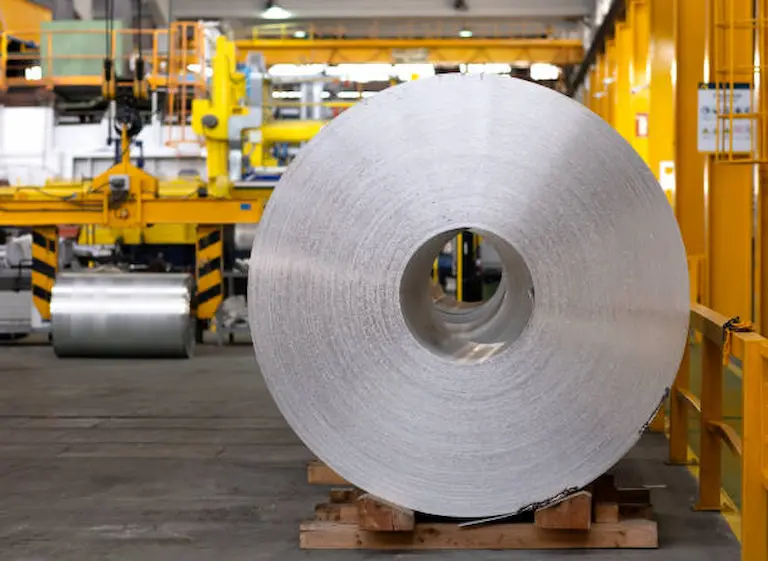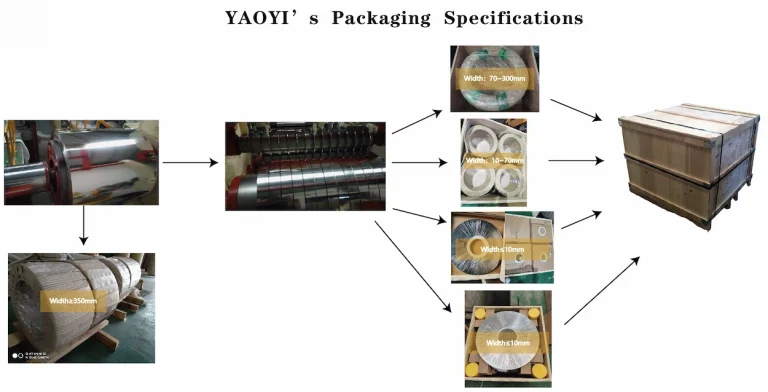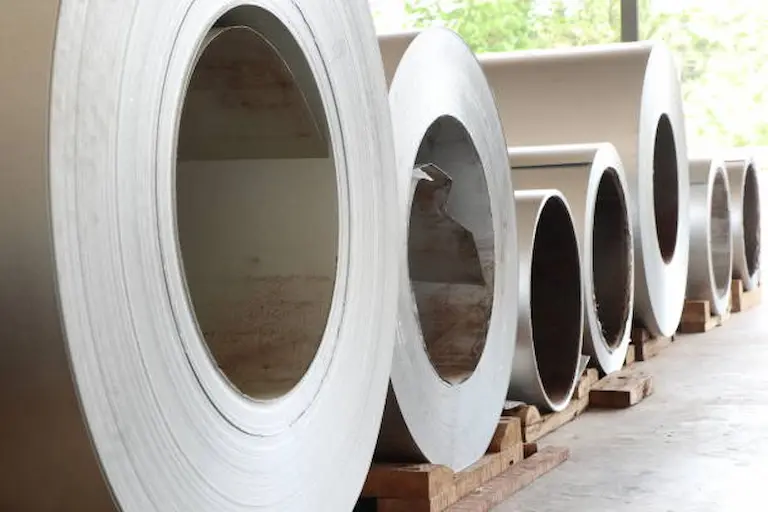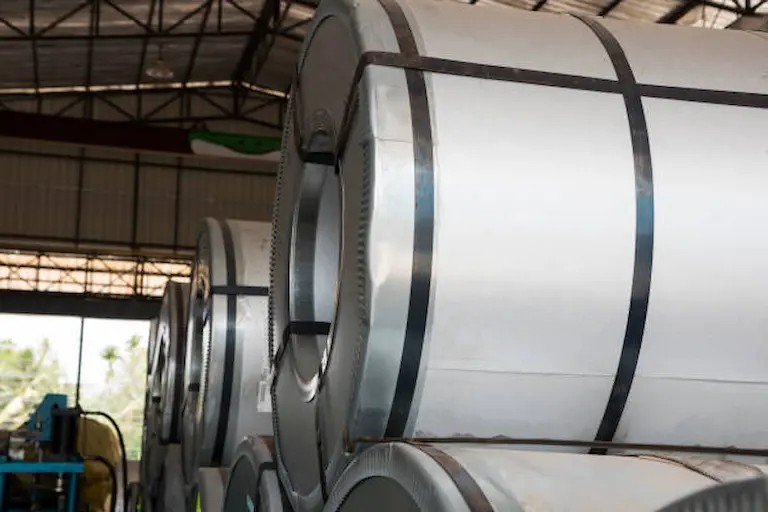As a type of Austenitic stainless steel, SS 301 is the most widely used type of stainless steel in the world. AISI 301 chemical composition is not difficult to be understood. The products possess tensile strengths up to 1800 Mpa, and the stainless steel grade 301 is typically supplied in strips or wires. It may be processed into tempers ranging from 1/16 Hard to Full Hard, and it can be used in a variety of applications.


In terms of composition, Myriad’s aisi 301 stainless steel is an austenitic stainless steel that includes an optimal amount of both chromium and nickel. 301 is a stainless steel alloy that is produced from stainless steel type 304. The method’s ultimate purpose is to reduce the amount of chromium and nickel present in the water. The following is the consequence of this:
If you compare the composition of this to ordinary 301, Yaoyi’s aisi 301 chemical composition contains a higher concentration of nitrogen and hardens at a faster rate. In accordance with ASTM A666 standard, only aisi 301 is permitted. Other conventions are used to represent the numbers 301L and 301LN, in addition to the numerals themselves.
Try for free information about the Aisi 304 stainless steel : the best you can find & purchase – Yaoyi
Remember to contact us for free samples of the AISI 301 stainless steel materials and products.
AISI 301 chemical composition, after being submitted to controlled analysis, was found to be capable of keeping sufficient ductility even when subjected to 1/12 hostile environmental conditions. AISI 301 in this form can be found in a variety of applications including aircraft, railcar components, and architectural projects, among others.
Therefore, it is possible to employ tempers of this grade, which range in hardness from 34 to full hard, in applications that require excellent wear resistance and spring properties, but that have simple form designs and are not subjected to high temperatures.
On the other hand, 301L, a low carbon version of aisi 301, is the ideal choice for applications requiring abrasion resistance, good ductility, and abrasion resistance at high temperatures. There are several variations of this grade and 301LN is one of them.
AISI 316L & AISI 316: Everything You Need To Know – Yaoyi stainless steel
To improve the corrosion resistance of steel, yaoyi’s aisi 301 stainless steel is made up of a combination of several elements. Chromium is the most important alloying component in all stainless steel alloys (10.5 percent minimum).
Many distinct alloys of stainless steel, each containing multiple different elements, are available; nonetheless, iron, carbon, and chromium are the three most important constituents of stainless steel. Low-carbon steel containing at least 12 percent chromium creates a uniform layer of protective oxide on its surface and is therefore referred to as stainless steel or stainless steel alloy.
Moreover, nickel, niobium, molybdenum, and titanium are all elements that can be used to create alloys with stainless steel, in addition to the fundamental constituents of stainless steel. Each of these components contributes an important characteristic to the final product.
Thus, titanium, for example, provides significant strength to the end product while not adding any unwanted weight to the process. Chromium is an excellent corrosion-resistance metal, although nickel and niobium are valuable adjuncts, particularly in low-oxygen conditions.

In accordance with ASTM criteria and temper rolling, a wide variety of magnetic and nonmagnetic materials can be composed within the confines of the ASTM specifications.
It is possible to acquire mechanical properties for a variety of various applications using this method. Yaoyi aisi 301 can withstand exposure to a wide range of corrosive media while remaining corrosion-resistant. The rusting, on the other hand, is a corrosive process.
In addition, these steels have inferior properties than 18-8 chromium-nickel steels, which are used in high-performance applications. One of its most distinguishing qualities is its susceptibility to carbide precipitation.
Best AISI 321 stainless steel products are available- YAOYI Stainless Steel
The heat generated during welding means that it cannot be utilized in many applications and must be replaced with aisi 304 or 304L. AISI 301 chemical composition has a nominal composition of 17 percent chromium and 7 percent nickel, indicating that it is an austenitic stainless steel of the Type 301 (S30100) variety.
In connection, its hardness and resistance to air corrosion, as well as its qualities in each of the six available states or tempers, make this grade of steel a good choice.
As a result of its bright and appealing surface, it is an excellent choice for decorative structural applications, such as window frames by changing the chemical composition of the substance.

Myriad’s aisi 301 offers high thermal resistance up to 1550°F and is resistant to oxidation at lower temperatures. It displays an oxidation weight increase of 10mg/cm2 in 1,000 hours when heated to 1600°F (871°C), showing that it is extremely reactive.
Therefore, when exposed to temperatures greater than 1600°F, this stainless steel should be avoided at all costs.
Myriad’s aisi 301 steel is utilized in both the annealed and cold rolled states of manufacture, and it has a high strength to weight ratio. The tensile strength of work-hardened austenitic grades such as aisi 301 is significantly higher than that of the other stable austenitic grades in comparison.
ASTM A167: Composition, Properties, and Equivalent Grades – YAOYI
The unique chemical characteristics of aisi 301chemical composition’s material differentiate it from other materials and give it its distinct appearance:
Myriad’s distinctive characteristic of stainless steel is responsible for the large range of unique applications that stainless steel has in the industrial sector. Chromite is present in stainless steel, which contributes to the material’s outstanding oxidation resistance. Chromite concentrations as high as 26 percent by weight have been found in some grades of chrome.
It is notable that the coatings and anti-corrosion paints can help to keep other metals from corroding, but as the protection wears off, the corrosion process begins all over again. Any removal of stainless steel’s natural chromium oxide coating results in the formation of a new coat on the exposed surface, which prevents corrosion deterioration from occurring. This is due to surface damage.
Stainless steel’s biological inertness makes it a great material for medical equipment such as surgical tools, trauma screws, and plates, among other applications. This characteristic makes Inconel a good metal for a variety of applications, including cutlery and culinary equipment.
Since there are no problems with this chemical when it comes to acid, basic, or organic compounds.
Due to this, the non-reactivity of organic compounds is similar to that of basic compounds, and the non-reactivity of basic compounds is similar to that of organic compounds. A result of this property, stainless steel is a highly desirable material for use in the chemical industry for a wide range of applications such as storage, handling, and other procedures.
Myriad’s stainless steel is also resistant to a wide range of chemicals, which is an added bonus. It is resistant to a variety of substances, including acids, bases, and organic compounds. The resistance to acids varies based on the grade of the material being employed. Some grades are capable of withstanding extremely concentrated acids, whereas others are only capable of withstanding small amounts of concentrated acids or bases.
In addition, moisture, salt, sulfur, carbon dioxide, and chloride-containing substances are all resistant to stainless steel’s corrosion resistance. The ability to withstand extreme conditions for a longer amount of time than the bulk of other metals is due to this property of the metal.
ASTM A240 Type 304: Properties, Pricing, and Applications – YAOYI
Following the Yaoyi’s specifications, different sizes and shapes of stainless steel 301 complete hard can be obtained in a variety of shapes. The following is a breakdown of the chemical composition of 301 Stainless Steel, presented as a percentage of the steel’s total weight.
Carbon – Carbon has a maximum of 01.5 parts per million (ppm).
Phosphorus- Phosphorus has a maximum concentration of 0.045 parts per trillion (ppb).
Manganese- Manganese has a maximum concentration of 2.00 parts per million (ppm).
Silicon- Silicon has a maximum of 0.75 percent silicon
Sulfur- The maximum concentration of sulfur is 0.030 parts per million.
Chromium- Chromium is available during the hours of 16.00 and 18.00.
Nitrogen- Nitrogen concentrations are limited to 0.10 parts per million (ppm).
Nickel- Nickel is priced between 6.00 and 8.00 dollars per pound.
Iron- Iron is a metal that should be utilized in moderation.
Please keep in mind that the amount of weight used in this composition is a percentage of the total weight. Yaoyi’s stainless steel is available in a variety of forms, including martensite and austenite, ferrite, and duplex.
When searching for stainless steel grades, if the grade you are seeking for is not listed, or if you require additional information, you may either visit our mechanical properties page or our stainless steel data sheets.
Because it is cold wrought, it has a high degree of strength and ductility, and it is also resistant to corrosion. In addition, as previously noted, it possesses outstanding corrosion resistance properties of its own. Yaoyi’s aisi 301 is a versatile metal that may be utilized for a variety of applications including welding, forming, and drawing.
This sort of high-strength steel is available at Yaoyi in a number of conditions or tempers to accommodate a wide range of uses. Yaoyi also produces 301 in three distinct hardnesses: full hard, half hard, and quarter hard. Full hard is the hardest of the three hardnesses.
Grade 304 Stainless Steel Foil – YAOYI Stainless Steel
Martensitic steels have a low chromium concentration, and as a result, have poor corrosion resistance, but they have a high strength to weight ratio. Martensitic steels are particularly well suited for applications requiring extreme strength.
Therefore, a type of martensitic chrome stainless steel that is one of the most widespread on the market, it is composed mostly of low or high carbon steel with a chromium concentration ranging between 11.5 and 18 percent.
Hence, chrome is credited with providing corrosion resistance to these steels, which are designated as 403, 410, 414, 416, 416 (Se), 420.431, 440A.440B.440C., and 416 (Se) by the International Organization for Standardization (ISO). The following are examples of martensitic stainless steels that are commonly used in a range of applications in different countries.
For safety, Yaoyi’s carbon content is low to moderate steel having a carbon content of 13 percent. Steel having a high carbon content of 18 percent Cr is known as high-carbon steel. Low-carbon nickel-containing steel with a nickel content of around 2% and a carbon content of 17 percent.
Read more:difference between Stainless Steel 316 and Stainless Steel 316l
The stable austenite structure of austenitic stainless steel is achieved when the steel has roughly 18 percent Cr, approximately 8 percent to 10 percent Ni, and approximately 0.1 percent carbon in the alloy. Unlike other materials, it is nonmagnetic and has a high degree of toughness and flexibility, but its strength is modest; unlike other materials, it cannot be strengthened by phase change and can only be strengthened by cold working.
Ferritic stainless steel is the second most widely used type of stainless steel. It consists primarily of stainless steels of grade 430. While this range of steels does not have the same corrosion resistance as austenitic steels, it is a more cost-effective alternative that is frequently utilized in the food service industry.
Yaoyi’s ferritic stainless steel has a chromium concentration ranging from 11 percent to 30 percent and a cubic crystal structure, with the center of the body located in the center of the crystal structure. The majority of the time, it does not contain nickel, but it may contain trace amounts of other elements such as Mo, Ti, Nb, and others.
Aside from its great oxidation resistance, it also possesses excellent stress corrosion resistance, among other properties. It is largely utilized in the fabrication of parts that are resistant to corrosion caused by the environment, water vapor corrosion, and oxidation acid corrosion, among others. Poor plasticity, plasticity, and corrosion resistance are all considerably reduced after welding when compared to before welding, which is a significant improvement.
Austenitic-ferrite is a kind of iron that can be found in nature. It is a form of stainless steel in which the austenite and ferrite structures each account for approximately half of the total structure, making it duplex stainless steel. Although there is a small amount of carbon present, the Cr content varies between 18 and 28 percent, and the Ni concentration varies between 3 and 10 percent.
Some steels also contain alloying elements such as Mo, Cu, Si, Nb, Ti, and N.
On the other hand, a single alloy containing the properties of both austenitic and ferritic stainless steels is known as an austenitic ferritic stainless steel. It exhibits superior flexibility and toughness in comparison to ferrite, as well as no room temperature brittleness and significantly increased intergranular corrosion resistance and welding performance, all while retaining the original material’s iron content.
It is superplasticity that is responsible for the brittleness of plain stainless steel at 475°C, as well as the high heat conductivity of the material in this range. When compared to austenitic stainless steel, martensitic stainless steel has higher strength, and its resistance to intergranular corrosion and chloride stress corrosion has been significantly strengthened when compared to austenitic stainless steel.
As such, duplex stainless steel has the added advantage of being a nickel-saving stainless steel, in addition to having excellent pitting corrosion resistance and high strength.
How To Find The Right Stainless Steel Supplier – YAOYI Stainless Steel